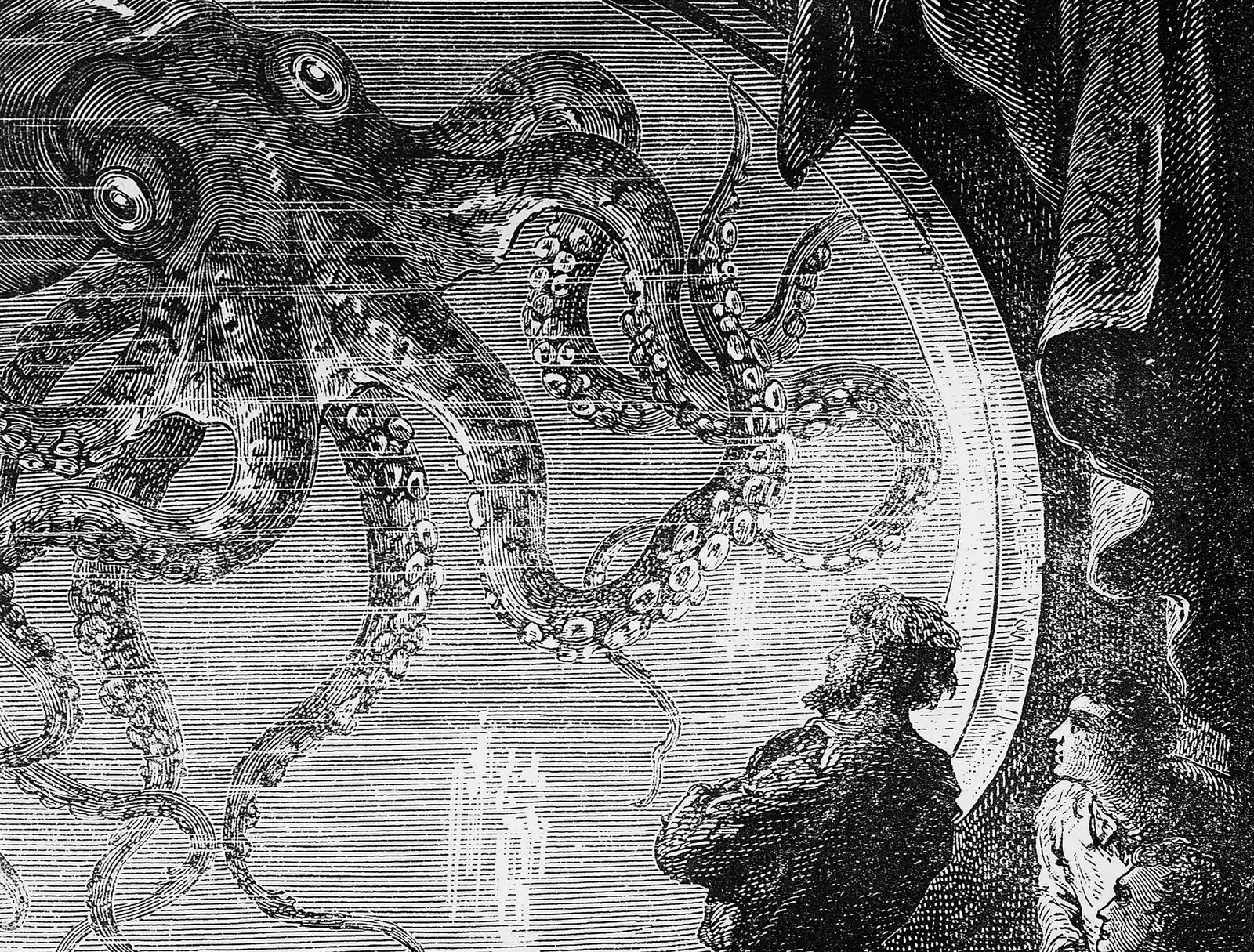
Illustration of 'Twenty thousand leagues under the sea'
Twenty thousand leagues under the sea It is a book to dream, to peek into other worlds. Unfathomable abysses, a captain whose name means nobody, giant squids, the Nautilus submarine...
Mythical names themselves generators of a fascination that has inspired writers from all over the world. Turgenev, Tolstoy, Bradbury or Rimbaud are just some of the writers he has influenced, not to mention those millions of readers who have grown up dreaming of the worlds that Jules Verne invented for them.
It is now 150 years since the publication of Twenty Thousand Leagues Under the Sea, but Verne's book does not age.
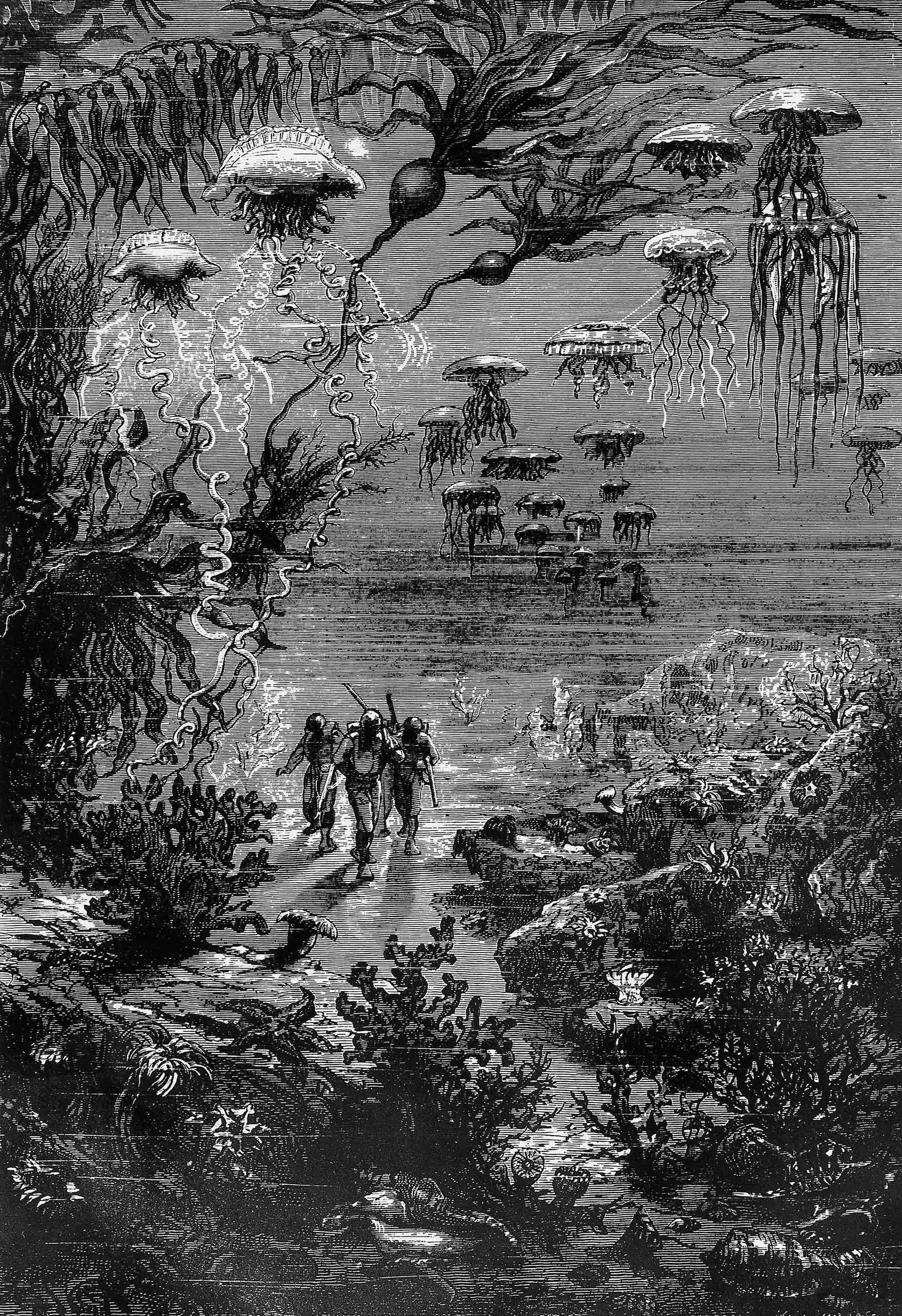
Millions of readers have grown up dreaming of the worlds Jules Verne invented.
Italo Calvino used to say that "every rereading of a classic is a discovery reading, like the first" and so, to revisit this poetic, romantic narration, whose protagonist is the sea, is to read it again for the first time. It happens with the classics: books whose history does not fall into the rust of oblivion, books that always tell a universal story that expands until it conquers new readers.
To celebrate the 150th anniversary of Twenty Thousand Leagues Under the Sea, this science fiction magnum opus, here some curiosities that serve as an approach to the book and its creator, Jules Verne.
A DATA TO UNDERSTAND JULES VERNE
Jules Gabriel Verne was born in 1828 in the bosom of a bourgeois family in Nantes. He had a comfortable childhood, his father was a well-positioned lawyer and, from childhood, Jules was a great travel lover.
There is a legend, which is believed to be real, which tells that Verne, while still small, he attempted to elope to enlist as an apprentice on a ship bound for India. His father found out in time and made him promise that, from now on, he would travel only with the imagination.
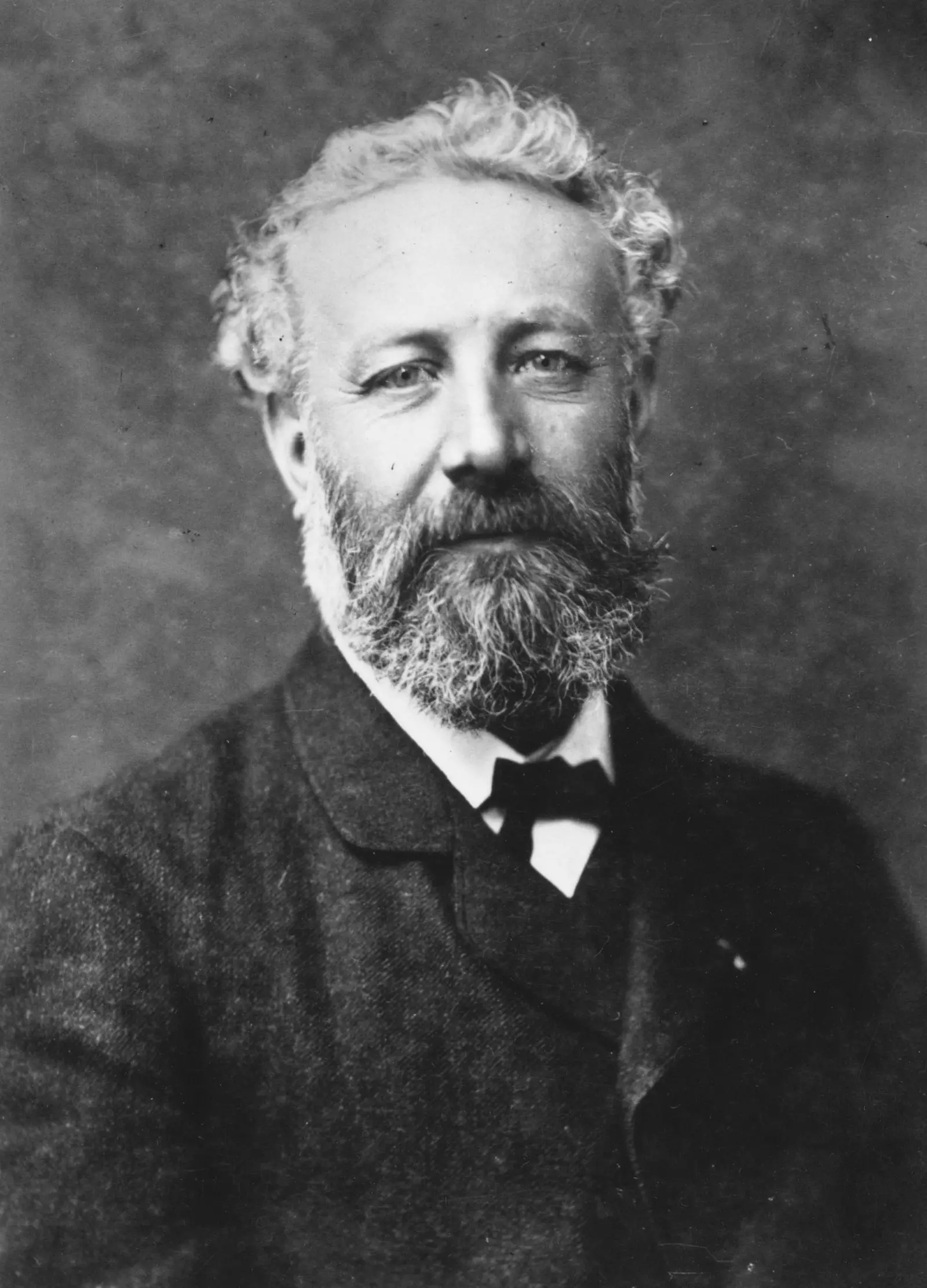
Portrait of Jules Verne
The boy grew up and, in addition to sailing the seas in his own boats, he would dedicate himself to traveling with his imagination and, As a result of these trips, some of the most emblematic works of science fiction would be born.
EXTRAORDINARY TRIPS
Is he generic title given to the collection of travel and adventure books written by Jules Verne. The first book to be included in the collection is Five Weeks in a Balloon (1863) and the last, The Impressive Adventure of the Barsac Mission (1918) . Twenty Thousand Leagues Under the Sea is also included in this collection of a total of 54 works.
THE PUBLICATION OF TWENTY THOUSAND LEAGUES UNDER THE SEA
The first time Twenty Thousand Leagues Under the Sea was published, it was not published in its entirety. was released by chapters in the Magasin d'Éducation et de Récréation in a period covering from March 20, 1869 to June 20, 1870.
Pierre Jules Hertzel, director of the Magasin, was reluctant to publish it: he was a man who firmly believed in progress and it seemed to him that Nemo's violence, his hatred against humanity, did not favor that peaceful morality that he defended.
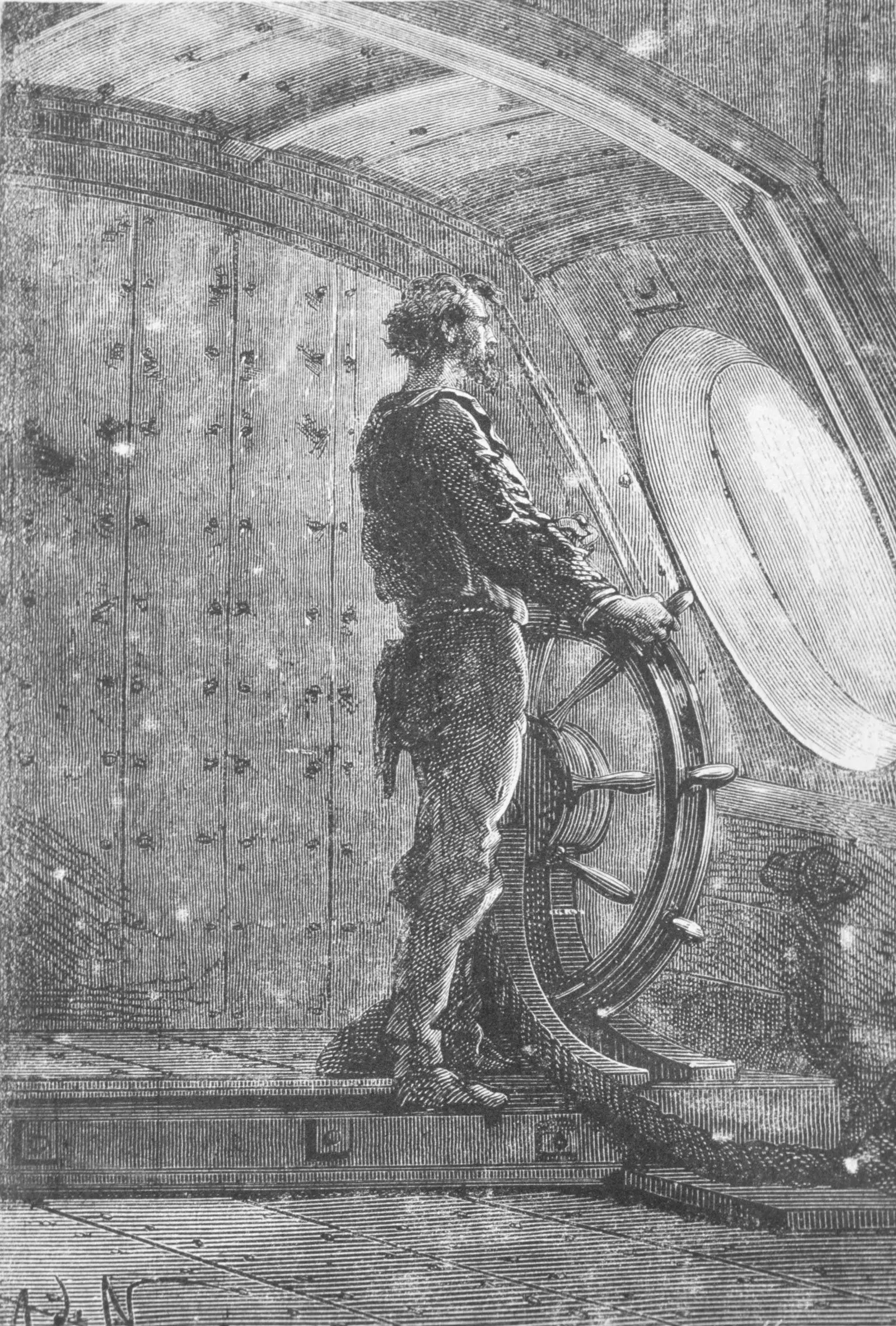
Captain Nemo
in full, the work was published in France in two parts (in 1869, the first; and in 1870, the second) . For unknown reasons, in ** Spain , both parts appeared jointly published ** in 1869. So the first joint edition is Spanish, although Jules Verne's biographers cite the French edition as the first.
THE PROTAGONIST, CAPTAIN NEMO
Scientist, inventor and captain of the Nautilus submarine, Captain Nemo is one of the characters in Twenty Thousand Leagues Under the Sea. Nemo is the builder of the Nautilus, with which he travels recognizing the oceans while he participates in different battles or sinks ships in the service of the British Empire.
In Latin, Nemo means nobody. Nemo has disowned the world and condemned himself to live forever away from everyone and everything, sharing with his submarine a deep hatred against humanity.
THE NAUTILUS
The Nautilus, mentioned or referenced many times on television, in comics or in movies, is the name of the fictional submarine that Verne invented for Twenty Thousand Leagues Under the Sea, which he also appears in The Mysterious Island (1975).
He put this name on honor to the Nautilus submarine, devised by the American engineer Robert Fulton , who created a submersible named after him in 1798. It could be submerged for 24 hours at a depth of eight meters. He even found a way to supply oxygen while the device was submerged. However, the English government did not want to finance it.

Verne created a perfectly detailed and developed submarine
THE PREDICTIONS OF JULES VERNE
Jules Verne was a man ahead of his time who managed to unite engineering, science and literature in his works. He has been called several times the father of science fiction, reinvented the travel book and can be considered a scientifically revolutionary.
When submarines were nothing more than the possibility of a fantasy, when electric motors were unthinkable, Verne created his Nautilus, a perfectly detailed and developed submarine. The French writer described with great precision and plausibility his inventions, giving infinity of data and explaining to the readers the operation of the same ones.
He played with the scientific and technological advances of his time, but he was ahead of them in an incredible way: the first submarine that bore any resemblance to the one invented by Verne was designed by Isaac Peral in 1890, 20 years after the novel was published.
Other of his predictions were electric weapons, advertising in the air, newscasts, videoconferences, solar sails, splashdown from space, the helicopter or even the Internet.
TWO JULES VERNE PHRASES
"The world does not need new continents, but new men." “What a great book could be written with what is known. Another much greater one would be written with what is not known!”
VERNIANS
This is how it is called the followers of Jules Verme, who meet today to continue debating aspects of his work.
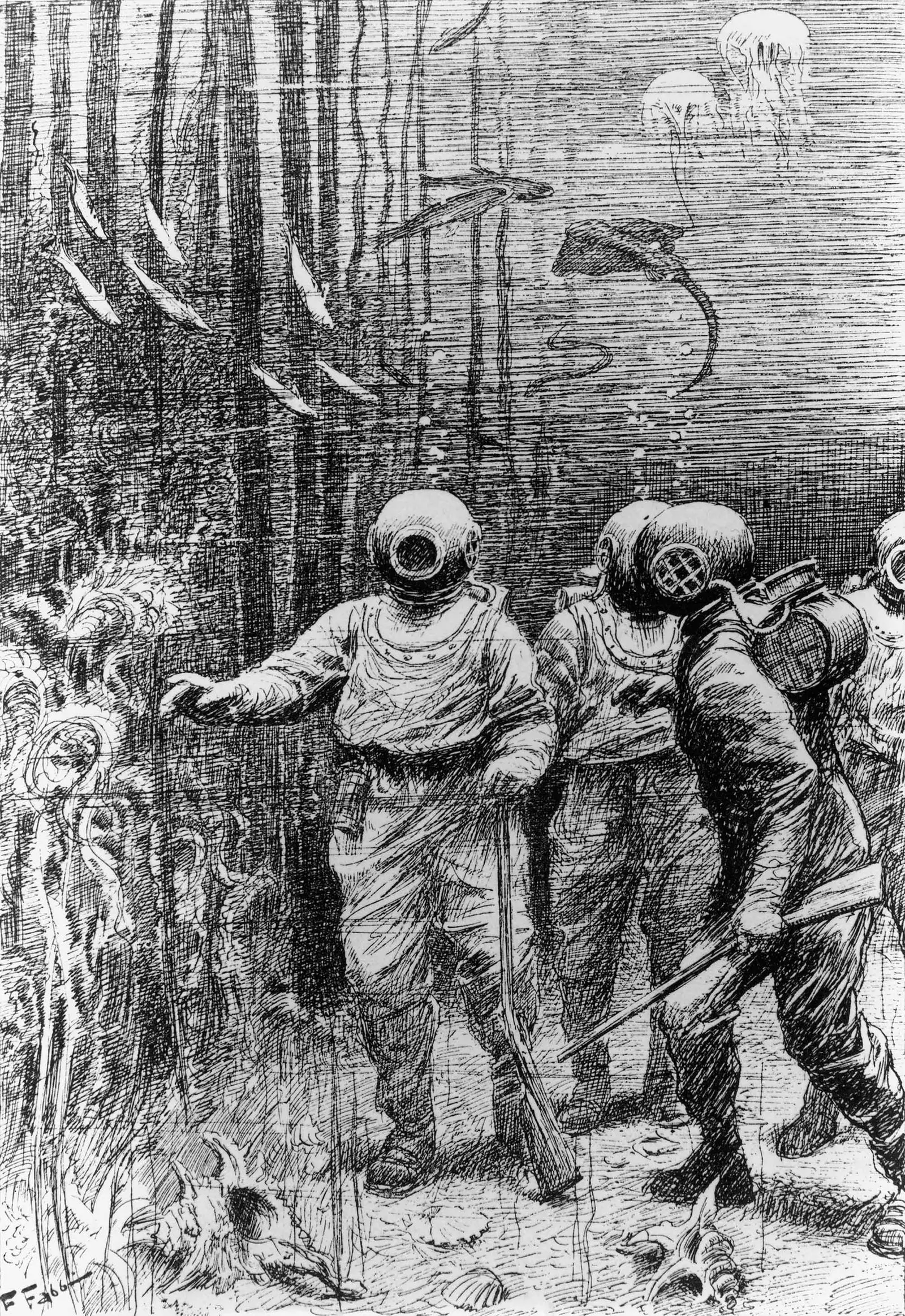
150 years making us dream
